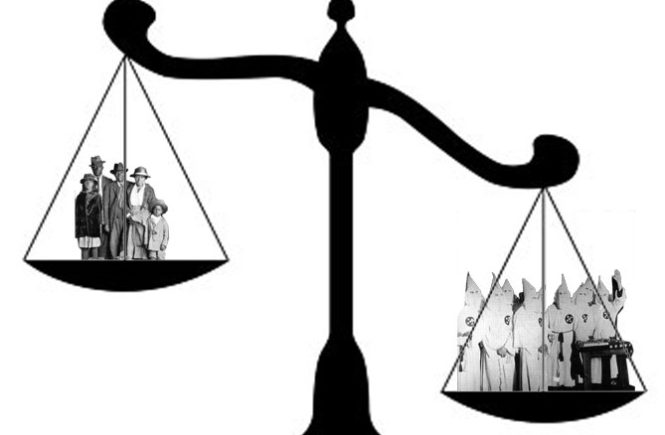When this hypothetical problem is given to people, majority of them opt in favour of diverting the train to the disused track to the left thereby saving the lives of a dozen kids. In the process, their logic goes, if one small girl on the disused track is killed, that is a small price to pay for saving the others.
At first glance that appears to be the acceptable solution. However, think and you will find the following things wrong with the majority solution:
- The dozen kids who are playing on the used track are knowingly doing something wrong. The lone girl playing on the disused track is actually right.
- In the majority solution we have opted to punish the lone girl who is right and reward the majority who is wrong.
- The dozen kids who are wrongly playing on the used track should be expecting a train passing and hence expected to jump off the track, even if at the last minute. On the other hand, the lone girl would never expect the train on the disused track and would surely be killed.
- Lastly, why is it a disused track? By diverting the train on the disused track we would willy-nilly make the lives of hundreds of people on board in danger; and all for the sake of a dozen kids doing the wrong thing.
Last season, at 0130 hrs (loud-speakers have a time limit only up to 2200hrs), with excessive noise of loud-speakers, I complained at the nearest police-station. After a series of questions about my name, address, phone number etc, the cop finally wanted to know what I wanted to do. I told him, “Mujhe sona hai.“(I have to sleep). Here was his prompt response, “Nahin, Navaratri ke time sone ka nahin.“(No, please don’t sleep during Navaratri). With this he disconnected.
Here is another incident. In the year 1990 I got posted to Naval Headquarters in New Delhi. I drove to visit a relative close to Rohtak Road. At one of the traffic signals when we stopped for the red light, a burly looking sardar got out of the taxi behind me, walked up to me and let me have it for my “poor traffic sense”. This is what he told me, “Naye aaye ho dilli mein? Ek hi lane mein chale jaa rahe ho; accident karwayoge kya?” (Are you new in Delhi? You are merrily continuing in one lane; do you want to cause an accident?) I looked at him. There was a genuine look of being wronged on his face. And, guess what? I realised that I might actually be a traffic hazard with my lone tendency to follow rules. The English were very good at devising mottoes that were not only practical but safe. One of these is, “Whilst in Rome do as the Romans do.” A friend of mine in Delhi has this sticker on his car, “Caution: I drive like you do”.
Lets, for a minute, turn to Anna Hazare movement against Corruption. The movement has (erroneously) assumed that only a handful of politicians, bureaucrats, and government servants are corrupt. The majority who are with Anna and take part in processions, fasts etc are good lot who look down on bribes, short-cuts, dishonesty etc. What if the majority are like-that-only? How will they right themselves?
In the end, I also want to bring out that historically great things that have changed the world are not accomplished by majority but people who thought and did differently than what the majority believed in. Take just a handful: Copernicus, Galileo, and Darwin. If we had continued believing in the majority we would have continued believing, say, the Sun revolves around the Earth. However, to reach there, they had to face castigation, mockery, and derision.
It is the same many centuries later.
One thought on “PITFALLS OF MAJORITY RULE”
Comments are closed.

the majority analogy (train) was amazing, i would have never analysed it so well…your blog is an interesting read, every time i visit, there is something different..